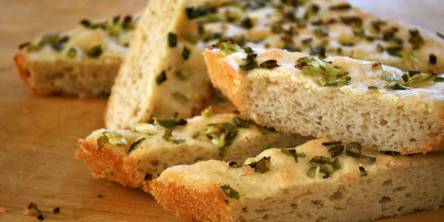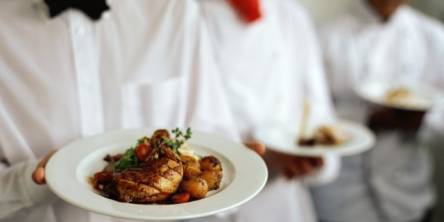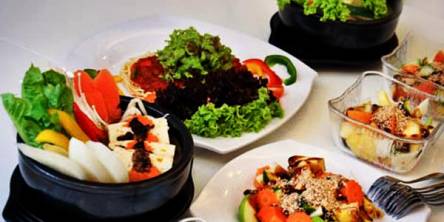Culinary Treasures of Argentina: Traditional Cuisine at its Best

Argentina's cuisine is deeply influenced by its history, culture, and immigration. This country in South America has a long history of diverse cultural influences, which is reflected in its rich culinary traditions. Argentina's food is a synthesis of tastes and cooking methods from around the world, originating with the indigenous peoples who first inhabited the region and continuing with waves of European immigrants who arrived in the late 19th and early 20th centuries.
Traditional Argentina food is deeply rooted in a celebration of communal dining and a profound reverence for the ingredients. From Argentine BBQ recipes to the aroma of freshly baked empanadas filling the air, it narrates a tale of the country's culinary development.

Through Argentinian culinary treasures, we discover the wealthy tapestry of flavors, textures, and customs that define traditional Argentine cuisine in this article. Every region of Argentina, from the grassy pampas plains to the snow-capped peaks of the Andes, contributes an awesome culinary legacy to the mosaic of Argentine delicacies. So sit back, unwind, and get ready to indulge your palate as we discover the delicious food that Argentina has to offer.
Iconic Argentine Recipes
Come along for a delectable culinary journey through some of Argentina's most well-loved traditional dishes, each packed with flavor and cultural significance.
Asado:
1. The ultimate dish in Argentine cooking is asado, which is prepared as a sacred ritual around a grill (parrilla). Simple seasonings like salt and occasionally a dash of chimichurri sauce are used to season a variety of beef cuts, including flank steak, chorizo sausage, and ribs. The meat acquires rich, smoky flavors from being slow-cooked over a wood or charcoal fire. Asado gatherings are a cornerstone of Argentine social life, bringing friends and family together to share stories and laughter over succulent grilled meats.
Empanadas:
2. Savory pastries referred to as empanadas, have a selected area in the stomachs and hearts of Argentines. A tasty blend of vegetables, melted cheese, diced chicken, or seasoned ground pork are just a few of the delectable fillings that those handheld treats can be full of. The dough, which produces a soft, flaky crust, is usually made of flour, water, and from time to time, a small amount of lard. Numerous nearby versions exist for empanadas, each with a fantastic filling and folding approach.
Milanesa:
3. Milanesa is Argentina's solution to the conventional schnitzel, a crispy, golden-brown cutlet of meat that really is breaded and fried to perfection. While beef is the most commonplace preference, you may also discover milanesa made with chook, beef, or even veal. The meat is thinly sliced and then dipped in breadcrumbs flavored with parsley, garlic, and, now and again, grated Parmesan cheese. When served hot and crispy, milanesa is often served with a facet of creamy mashed potatoes or a crisp salad, together with a generous squeeze of lemon.
Locro:
4. Warm and comforting on chilly Argentine evenings, locro is a substantial stew. Originating from native Andean cultures, this hearty dish has developed over time to become a cherished national favorite. Corn, beans, meat (such as pork or beef), and a mix of vegetables (such as potatoes and pumpkin) are the main ingredients of locro. The flavors of the stew combine to create a thick, filling bowl of goodness as it simmers slowly. Locro brings people together in a spirit of camaraderie and is frequently enjoyed during national holidays and patriotic celebrations.
Dulce de Leche:
5. A discussion about Argentine food would be complete without mentioning dulce de leche, the decadent caramelized milk treat cherished by people with candy tooths anywhere. Dulce de leche is a thick, creamy caramel produced by progressively heating sweetened condensed milk and is a staple in many pastries and cakes. Whether slathered among layers of cake, drizzled over ice cream, or absolutely spread on toast, dulce de leche provides a decadent touch to any deal.

These classic Argentine dishes are culinary masterpieces in themselves, demonstrating the nation's profound cultural legacy and unwavering love of delicious food. Thus, why not introduce a hint of Argentina into your cooking and witness the enchantment firsthand?
Traditions and Customs in Culinary
In Argentine society, food is not only a source of nourishment but also a focal point for partying, social engagement, and cultural identity. From intimate family gatherings to active fairs, Argentineans have a deep appreciation for the function that food plays in their lives.
In the Argentine lifestyle, sharing a meal is more than simply filling one's belly; it's a way of forging connections and strengthening bonds. Sunday circle of relatives gatherings are a beloved culture wherein relatives come collectively to revel in a leisurely meal and catch up on each other's lives. These gatherings are regularly characterized by traditional dishes like asado, empanadas, and homemade pastas, served along with laughter and energetic communication.
One of the most iconic Argentine culinary customs is mate drinking. Mate, a traditional natural tea, is more widespread than just a beverage; it is also an image of friendship, hospitality, and networking. Sharing a mate is a ritual that brings buddies together, whether or not they are sitting in a park speaking to friends or accumulating around the table, swapping testimonies. The act of passing the mate gourd and sipping from the equal straw fosters a feeling of camaraderie and solidarity among individuals.
During Argentine galas and holidays, which are typically celebrated with feasting, music, and dancing, food also takes center stage. Families get together around holidays like Christmas and Easter to prepare elaborate dinners that feature classic dishes like panettone, vitel toné (veal with tuna sauce), and roast turkey. Argentina observes a number of cultural festivals throughout the year, including Independence Day and Carnival, in addition to non-secular holidays. Parades through the streets, live music, and of course, an abundance of delicious food and beverages are what define these celebrations.
In Argentine society, food, whether consumed at a formal celebration, a casual get-together with friends, or a private moment over a mate, is a powerful symbol of community and connection. It makes the people of the nation happy and proud and reflects its rich cultural past.
Similar Articles
The world of modern culinary delights is constantly changing, influenced by influences from around the world, while increased levels of efficiency and versatility in the kitchen have become indispensable. Whether you are a home cook or operate a catering or hospitality business, incorporating the use of all types of electrical appliances into your kitchen regime can bring you several benefits.
Countries all over the world have their kind of food to offer. Many travelers now look for good food and places to visit. Are you're a traveler and want some taste of Hispanic-based dishes without going to a restaurant? Then you must go for Dominican food to cook and try.
Garlic bread is one good side dish that can make mealtime an exciting event. The fan base of garlic bread is so strong that the whole congregation in lunch table would ask for one more piece, if not more. Be it a pickled garlic bread or a baked one, garlic bread is always delicious in every form.
There are several Mediterranean restaurants that serve authentic Mediterranean dishes but when you aren’t well verse with the choices, picking the best delicacy from the menu can be intimidating.
Cumin is an ancient spice for its distinctive flavor and aroma which has been in use for thousands of years in many cultures and culinary. It is used in traditional medicine and has many health and beauty benefits. It plays an important role in the home and herbal remedies.
In any event, the food of which you serve your guests is paramount to the overall success of the meal. Being an integral part of the catering aspect, it is only natural for prospective clients to be a little meticulous when it comes to selecting their potential caterers.
Pineapple, by many, is a standout amongst the most delightful natural products accessible and for all the correct reasons. It is a significant adaptable organic product since it can be utilised as a part of a wide assortment of dishes, from treats to pizza and for softening the meat.
There is diversity in every aspect of India. Be it language, culture, tradition or food, there is an essence of diversity everywhere.








